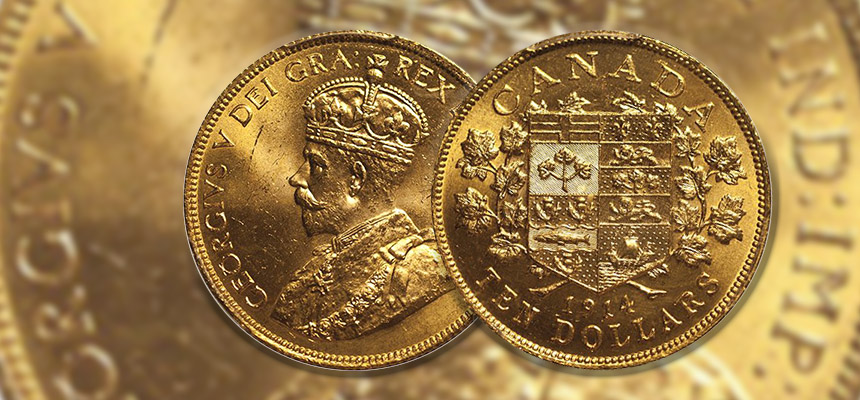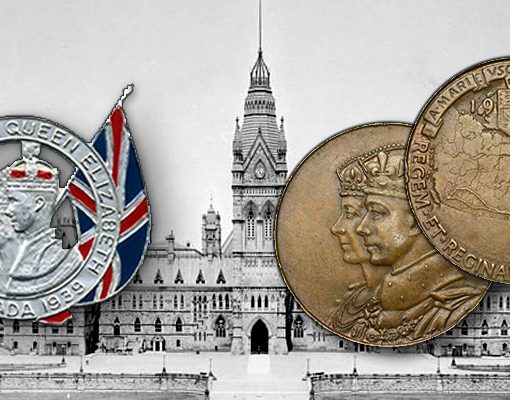Guide to Some Forgeries of Canadian Gold Coins.
By: MICC Lifetime member #001
In about 1973, collectors and dealers became aware that most – if not all – of the Canadian gold coins struck 1912-14 had been recently counterfeited. It’s obvious that the target was collectors since the forgeries appear to be of good weight and fineness. It was suspected that they originated in the Near East since, at the time, it was known that some Lebanese “private mints” were turning out numerous forgeries of various collectors’ coins, many of them very good imitations.
In this case, the forgeries were apparently the “products” of a well-equipped outfit and it seems probable that actual specimens in top condition were used as models in a transfer lathe, the dies cut in actual size. However, actual coins are probably never really perfect and usually require a certain amount of touch-up. If a nick or dent on the coin is transferred to the die, it would appear as a raised projection, quite easy for the careful engraver to remove; however, a “pimple” on the coin would be a negative feature on the die and able to be removed only by stoning or wearing away a whole piece of the field with jeweller’s rouge or the like. This latter is probably always detectable.
Below are illustrated the main points to be looked for since the same defects exist on all the foregeries of this particular batch.
Canada $5 Gold, 1912.
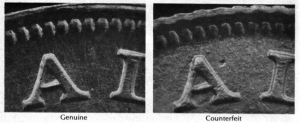
Points to look for: There is a small dimple between A and D of CANADA. There is also a shallow gouge between the serifs of the same A which the forgers attempted to stone away but succeeded only in making the serifs fuzzy instead of sharply cut off.
Canada $10 Gold, 1912.
Points to look for: There are three: two on the obverse and one on the reverse.
Obverse: On Illustration 1, there are a group of parallel, depressed lines below the left stand of R in GRA.
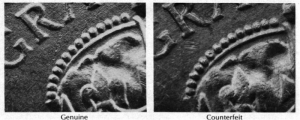
On the second illustration, there is a mottled patch of die scratches between the N of CANADA and the rim beading on the obverse. On the third illustration, the reverse date displays three small horizontal gouges between the shield and the 9 while to the right of the 1 is a distinctive “ox-yoke”-like incused mark.
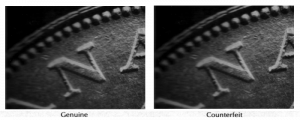
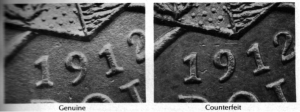
For some reason, this date/denomination in this forgery series has the greatest number of diagnostic marks.
Canada $10 Gold, 1913.

Points to look for: There are two main ones, both on the reverse. (a) there are fine tool scratches between the left tip of the center leaf and the shield. (b) There is a patch of raised die-scratches just above the 3 of the date.
Canada $10 Gold 1914

Points to look for: There is a long raised line extending from the bottom of the E in ET on the obverse nearly to the cross in the crown.
Previously printed in the MICC Numismatic Journal Vol-02, Issue-01
